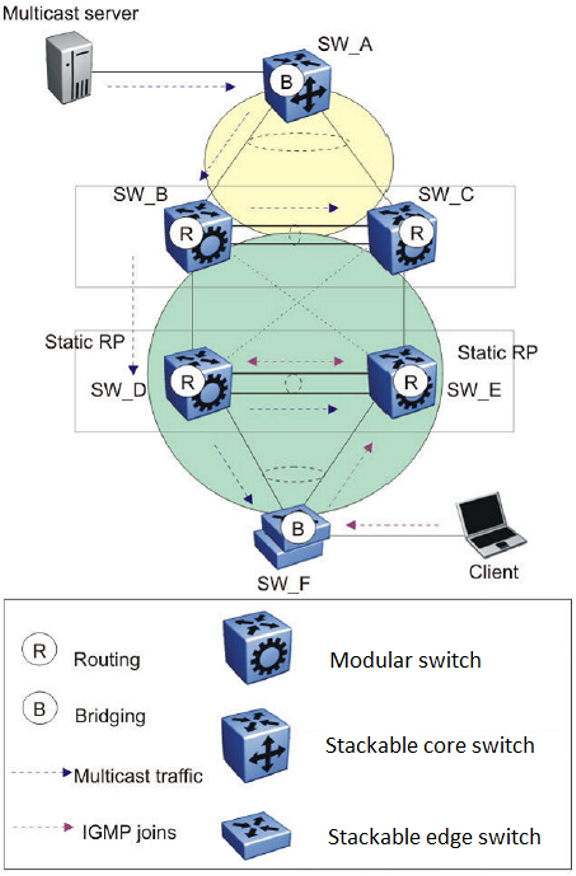General guidelines
The following list identifies general guidelines to follow if you use multicast and switch clustering:
Enable Protocol Independent Multicast - Sparse Mode (PIM-SM) on the vIST VLAN for fast recovery of multicast. A unicast routing protocol is not required.
Enable Internet Group Management Protocol (IGMP) snooping and proxy on the edge switches.
The following figure shows multicast behavior in an SMLT environment. The configuration in the following figure provides fast failover if the switch or rendezvous point (RP) fails.

In Multicast behavior in SMLT environment the following actions occur:
The multicast server sends multicast data towards the source designated router (DR).
The source DR sends register messages with encapsulated multicast data towards the RP.
After the client sends IGMP membership reports towards the multicast router, the router creates a (*,G) entry.
The RP sends join messages towards the source DR on the reverse path.
After the source DR receives the join messages, it sends native multicast traffic.
After SW_B or SW_D receives multicast traffic from upstream, it forwards the traffic on the vIST as well as on the SMLT link. Other aggregation switches drop multicast traffic received over the vIST at egress. This action provides fast failover for multicast traffic. Both SW_D and SW_E (Aggregation switches) have similar (S,G) records.
In case of SW_D or RP failure, SW_B changes only the next-hop interface towards SW_E. Because the circuitless IP (CLIP) RP address is the same, SW_B does not flush (S,G) entries and achieves fast failover.

